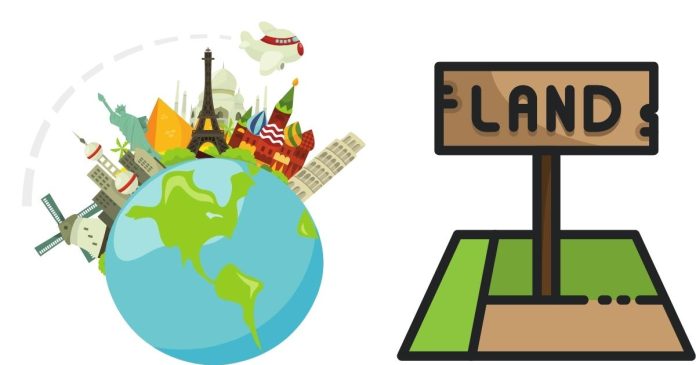Earth’s surface is vast and diverse, encompassing oceans, mountains, forests, deserts, and more. One common question about our planet is, “What percentage of the world is covered in land?” The answer provides fascinating insights into the balance between Earth’s terrestrial and aquatic environments.
The Distribution of Earth’s Surface
Earth’s total surface area is approximately 510 million square kilometers (197 million square miles), which includes both land and water. The division between land and water is as follows:
- Land: 29.2% of the Earth’s surface (~149 million square kilometers or 57.5 million square miles).
- Water: 70.8% of the Earth’s surface (~361 million square kilometers or 139.5 million square miles).
Thus, only about 29% of the Earth is covered in land, while the majority is water.
How is Land Distributed?
Continental Landmass
Earth’s land is distributed across seven continents:
- Asia: The largest continent, covering about 44.58 million square kilometers (17.2 million square miles).
- Africa: The second largest, covering 30.37 million square kilometers (11.7 million square miles).
- North America: Covering 24.71 million square kilometers (9.5 million square miles).
- South America: Covering 17.84 million square kilometers (6.9 million square miles).
- Antarctica: Covering 14.2 million square kilometers (5.5 million square miles).
- Europe: Covering 10.18 million square kilometers (3.93 million square miles).
- Australia (and Oceania): Covering 8.56 million square kilometers (3.31 million square miles).
Habitability
While 29% of Earth’s surface is land, not all of it is habitable. A significant portion consists of deserts, mountains, and ice-covered regions that are challenging for human habitation.
Land-to-Water Ratio in Perspective
The 29:71 ratio of land to water highlights Earth’s status as a “blue planet.” The abundance of water is critical to maintaining life, influencing climate, and shaping the ecosystems that exist on both land and sea.
- Oceans: Cover the majority of Earth’s surface and contain 97% of the planet’s water.
- Freshwater and Ice: Of the 29% landmass, around 10% is covered in glaciers and ice caps, primarily in Antarctica and Greenland.
Why is This Division Important?
The distribution of land and water significantly impacts:
- Climate and Weather: Oceans play a vital role in regulating global temperatures, while landmasses influence wind and weather patterns.
- Biodiversity: Both terrestrial and aquatic ecosystems contribute to Earth’s vast biodiversity, with unique flora and fauna adapted to each environment.
- Human Settlement: Historically, civilizations have thrived near water bodies, with only a small portion of Earth’s land densely populated.
Only 29% of Earth’s surface is covered by land, with the remaining 71% covered by water. This balance underscores the planet’s unique composition, supporting life through its diverse terrestrial and aquatic ecosystems. Understanding this distribution helps us appreciate the intricate dynamics that sustain life and highlights the importance of conserving both land and water resources.


